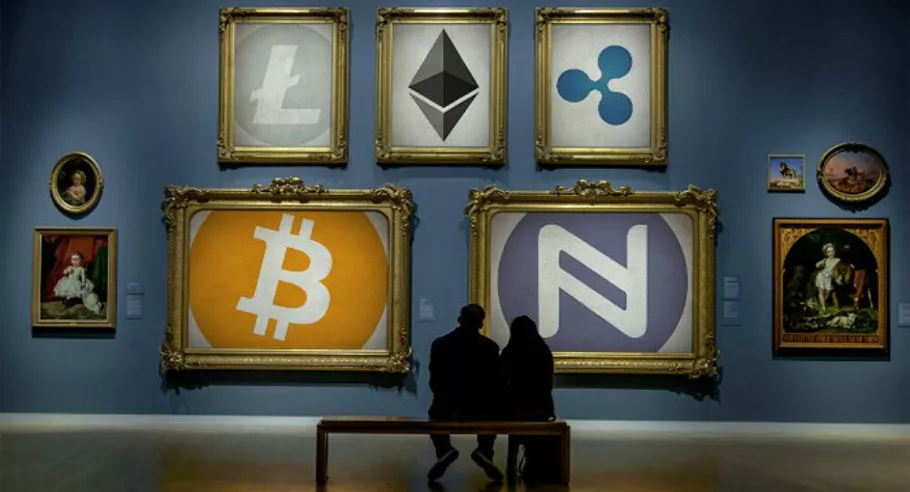
How Cryptocurrencies Are Revolutionizing the Art Market
Introduction: Cryptocurrencies have taken the financial world by storm, and their impact on the art market has been equally transformative. Digital currencies like Bitcoin, Ethereum, and others are changing how artists sell their work, how collectors buy art, and how ownership is verified through blockchain technology. Whether you’re an artist looking to enter the crypto space or a collector interested in buying art with cryptocurrency, the art world’s integration with blockchain is unlocking new possibilities.
What Is Crypto Art?
Crypto art refers to artwork that is associated with a cryptocurrency. The most common form of crypto art is NFT (Non-Fungible Token) art, which is bought and sold using cryptocurrencies like Ethereum. NFTs serve as proof of ownership and authenticity, stored securely on the blockchain. However, beyond NFTs, many artists and collectors are also using cryptocurrencies as a form of payment for both digital and physical artworks.
The Role of Cryptocurrencies in the Art Market
Cryptocurrencies have made it easier for artists to sell their work directly to buyers without the need for intermediaries. Blockchain technology provides a decentralized platform where transactions are secure and transparent. Additionally, smart contracts on blockchains like Ethereum allow artists to automate royalties, ensuring they receive compensation whenever their artwork is resold, something that’s difficult to track in traditional art markets.
Benefits of Using Cryptocurrencies in the Art World
- Transparency and Authenticity: Blockchain technology ensures that every transaction is publicly recorded and verifiable. This increases transparency in the art market and helps prevent forgeries and fraud, a long-standing issue in traditional art sales.
- Global Accessibility: Cryptocurrencies are borderless, meaning anyone from any country can participate in the crypto art market. Artists no longer need to rely on galleries or auction houses to reach an international audience.
- Ownership and Royalties: Through smart contracts, artists can ensure they receive a percentage of the sales price every time their artwork is resold. This creates a more sustainable revenue model for artists, particularly in the secondary market.
Cryptocurrencies Commonly Used in the Art Market
- Ethereum (ETH): As the primary currency for NFT transactions, Ethereum plays a central role in the crypto art market. Its blockchain powers platforms like OpenSea, Foundation, and SuperRare, where artists mint and sell their digital artwork as NFTs.
- Bitcoin (BTC): While Bitcoin is less frequently used for NFTs, it remains a popular choice for collectors and galleries looking to accept cryptocurrency payments for physical and digital artworks. Some high-profile auction houses and galleries have begun accepting Bitcoin for major art sales.
- Tezos (XTZ): Known for its environmentally friendly proof-of-stake blockchain, Tezos is gaining popularity as a cryptocurrency for artists and collectors who are concerned about the energy consumption of other blockchains like Ethereum.
NFTs and the Role of Ethereum in the Art World
Ethereum’s blockchain is the foundation of most NFT transactions, making it the dominant cryptocurrency in the art market. NFTs, which are digital tokens representing ownership of unique assets, have revolutionized how art is bought and sold. With NFTs, artists can mint (create) digital tokens for their works, which are then sold on platforms like OpenSea and Rarible. Each NFT is stored on the Ethereum blockchain, guaranteeing authenticity and ownership.
Why Ethereum? Ethereum’s smart contract functionality allows creators to set rules for their NFTs, such as royalties, resale fees, and more. This ensures that artists can continue to benefit from their work even after the initial sale.
High-Profile Art Sales Using Cryptocurrencies
- Beeple’s $69 Million NFT Sale: In 2021, artist Beeple made history when his digital collage Everydays: The First 5000 Days sold for $69 million at Christie’s auction house. This sale was conducted using Ethereum, marking a turning point for cryptocurrencies in the art world.
- Sotheby’s and Phillips Accepting Bitcoin: Major auction houses like Sotheby’s and Phillips have begun accepting Bitcoin for physical art sales, demonstrating the increasing integration of cryptocurrencies into the traditional art market. These auction houses recognize the growing interest from crypto collectors.
Challenges of Using Cryptocurrencies in Art
While cryptocurrencies and blockchain offer numerous benefits, there are challenges that need to be addressed:
- Volatility: Cryptocurrencies are known for their price fluctuations, which can affect the value of art transactions. Artists and collectors need to be aware of the risks associated with crypto payments.
- Environmental Impact: Ethereum’s proof-of-work consensus mechanism, used for validating transactions, consumes significant energy, raising concerns about the environmental footprint of NFT art. However, Ethereum’s planned shift to proof-of-stake (Ethereum 2.0) aims to address these concerns.
- Security Risks: As with any digital asset, cryptocurrencies and NFTs are vulnerable to hacking and theft. Collectors and artists must take precautions to store their assets securely in wallets and use reputable platforms for transactions.
How to Buy Art with Cryptocurrencies
Buying art with cryptocurrency is becoming easier thanks to an increasing number of platforms and auction houses accepting crypto payments. Here’s how to get started:
- Choose a Wallet: To buy art with cryptocurrencies, you’ll need a digital wallet. Popular options include MetaMask (for Ethereum-based transactions) and Coinbase Wallet (which supports multiple currencies).
- Explore NFT Platforms: Platforms like OpenSea, Rarible, and SuperRare allow collectors to browse and buy digital art using cryptocurrencies like Ethereum. These platforms host auctions, direct sales, and even fractional ownership of high-value works.
- Buy Physical Art with Crypto: Some galleries and auction houses now accept Bitcoin and Ethereum for physical artworks. For instance, Sotheby’s has auctioned pieces from renowned artists with payment options in Bitcoin and Ethereum.
The Future of Cryptocurrencies in the Art Market
The future of cryptocurrencies in the art world looks promising. As blockchain technology continues to evolve, we can expect to see more artists, collectors, and institutions embrace digital currencies for both digital and physical art transactions. With the rise of the metaverse and virtual galleries, cryptocurrency art transactions will likely become the norm for buying, selling, and trading art in the digital age.
Conclusion: Enter the New Age of Art with Cryptocurrencies
Cryptocurrencies are revolutionizing the art world, offering artists and collectors new ways to engage with and profit from the art market. Whether you’re exploring the world of NFTs or buying physical art with Bitcoin, cryptocurrencies offer endless possibilities for the future of art.
Explore our gallery for the latest NFT artworks and art pieces available for purchase with cryptocurrencies. Subscribe to our newsletter to stay updated on the latest crypto art trends and artist collaborations.
![]()

© 2024 YourLocalArt
Terms of Use
Privacy Policy
Security
Conditions of Sale
ACA’s Sellers Agreement
Buyer Guarantee
Do not sell my personal information
© 2024 YourLocalArt Terms of Use Privacy Policy Security Conditions of Sale ACA’s Sellers Agreement Buyer Guarantee Do not sell my personal information

